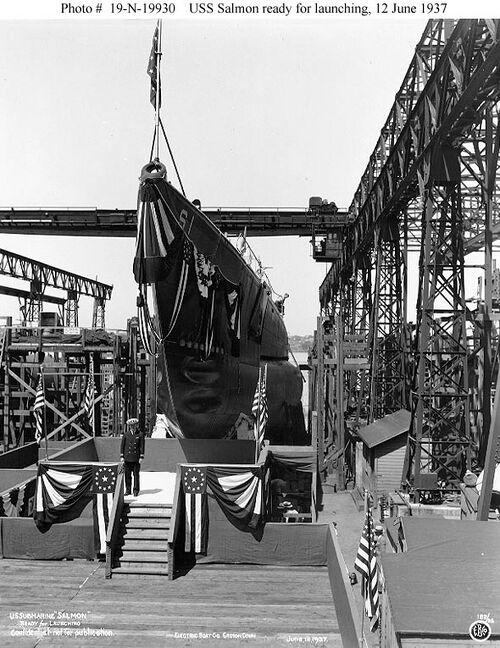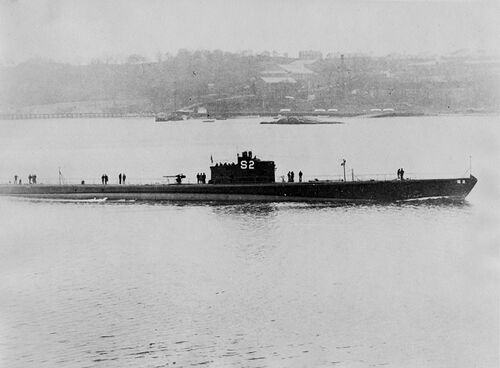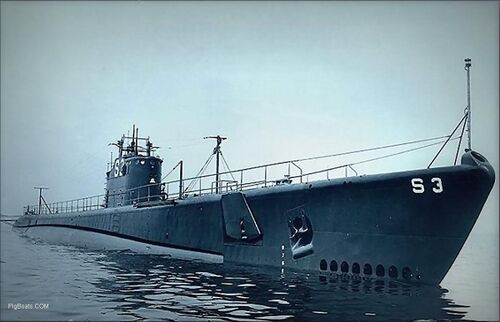Salmon/Sargo Class
Design and Construction Notes
The first six boats were authorized in Fiscal Year 1936 appropriations (the Salmon group), with construction of three going to EB, two to Portsmouth, and one to Mare Island. Six more boats of the class were authorized in FY-37 (the Sargo group) with the same spread of construction yards. Four more boats were authorized in FY-38 (the Seadragon group). They were split evenly between EB and Portsmouth. All 16 boats had the same performance specifications and armament, and were very similar in external appearance. They will all be considered to be one class here on PigBoats.COM.
The Navy had encountered some problems with the all-electric drive on the Porpoise class. Serious issues with flashover on the main motors while under load, and the loss of 360 horsepower in transmission through the electrical system temporarily soured the Navy on all-electric drive. Accordingly, the first 12 boats of the Salmon/Sargo class had a new "composite" drive arrangement where two engines were connected to the propeller shafts and two drove only generators. While successful, the composite drive arrangement was cramped, complicated, and difficult to maintain. The four Seadragons reverted to all-electric drive, the issues that the force had experienced with the Porpoises having been largely corrected by that time.
Due to a defect in the main induction valve operating system, Squalus (SS-192) sank while on trials near the Isle of Shoals off the coast of New Hampshire. The after part of the boat flooded during a test dive and 26 men lost their lives. The remaining 33 men were rescued in the very first operational use of the McCann Rescue Chamber. Squalus was salvaged, returned to Portsmouth, and repaired. Renamed Sailfish but retaining her original hull number, she went on to serve the Navy well, earning a fine war record in WWII.
These boats were in the thick of the fight against the Japanese from the first day of the war. Four of them (marked by a *) and their brave crews were lost in action and are considered to be "on eternal patrol".
Note... many early photos of these boats will show them with large "S" identifiers painted on their bows and fairwaters. These were used to identify the boats visually while on the surface. They were NOT their names or designations. The use of these identifiers was common on the fleet boats, but faded out in favor of hull numbers in 1938 because their use became confusing.
While generally very similar in external appearance, there were a lot of variations in these boats over the years, especially once WWII started. For a thorough explanation of these changes, please take a few minutes to read this article.Salmon (SS-182)

Seal (SS-183)

Skipjack (SS-184)

Snapper (SS-185)
Stingray (SS-186)
Sturgeon (SS-187)
Sargo (SS-188)
Saury (SS-189)
Spearfish (SS-190)
Sculpin (SS-191)*
Squalus (SS-192)
Sailfish (SS-192)
Swordfish (SS-193)*
Seadragon (SS-194)
Sealion (SS-195)*
Searaven (SS-196)
Seawolf (SS-197)*
Page created by:
Ric Hedman & David Johnston
1999 - 2023 - PigBoats.COM©
Mountlake Terrace, WA, Norfolk, VA
webmaster at pigboats dot com
